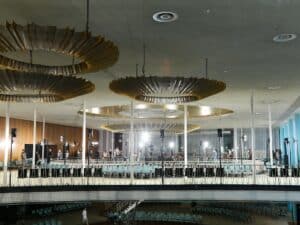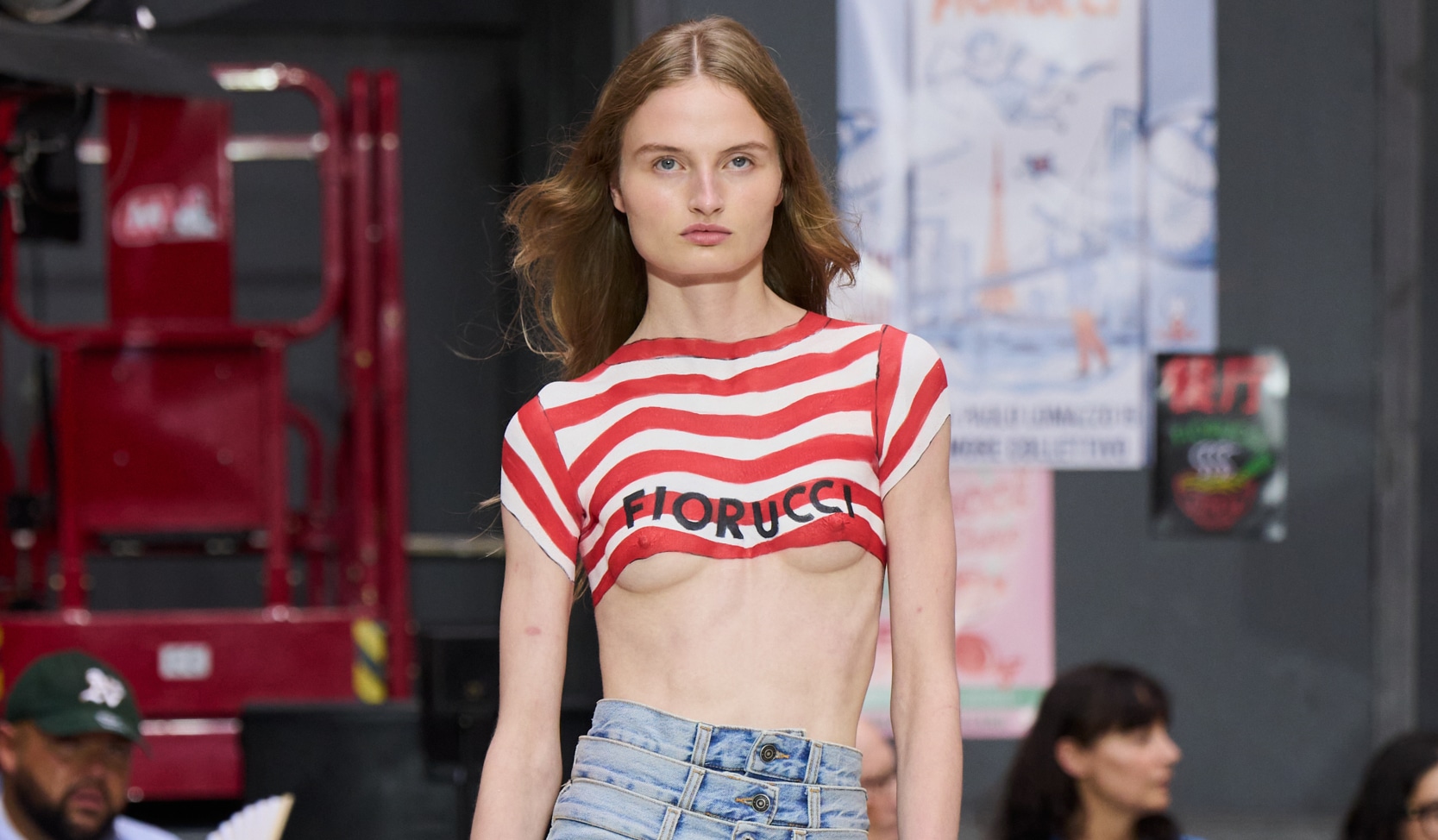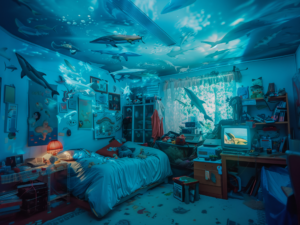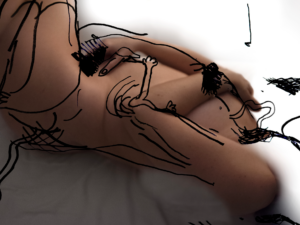An interview with two filmmakers of a different kind.
EMOTIONS CAPTURED ON FILM
The photographers Andreas Waldschütz and Lukas Rotter, both Austrians based in Berlin, bring the new musical production “Flight from the City – Vikingur Ólafsson Rework” (published by Deutsche Grammophon) to life in a dramatically beautiful way. The former work of composer Jóhann Jóhannsson, who died in 2018, is thus also given a visual remake and builds a bridge from the past to the future. But unlike usual music videos, this work is characterized by tranquility – the viewer has to linger to experience the shown dance performance by the Russian-born artist Valentin Tszin. This film is capable of touching its audience -– with extraordinarily staged emotions and the love for detail.
Interview: Katharina Fronius
In memory of the contemporary composer Jóhann Jóhannsson, the now celebrated sound artist and musician Vikingur Ólafsson created the work “Flight from the City” as part of the EP RETROSPECTIVE II – RARITIES. How and when did you come into the game?
Andreas Waldschütz: We, or rather Lukas, was in contact with Deutsche Grammophon, where the musical piece was released. Deutsche Grammophon had then advertised a pitch and invited us to to it. Obviously they liked our idea best.
…and how did this idea look like?
A.W: Right after listening to the work for the first time, it was clear to us that we wanted to do something with dance. But we didn’t want to go in the classical direction with ballet or something similar. Here Lukas had the idea to work together with the improvisational dancer Valentin Tszin.
Lukas Rotter: I already knew Valentin. He is an integral part of the Berlin art scene and known as an art figure and among other things for his expressive dance. He masters “butoh” a form of Japanese dance theater.
A.W: With his video, which he sent us because of our request, we cut a mood film for the first time and then sent it to Deutsche Grammophon – that’s how we won the project.
The result is an emotionally charged music video or better a short film. What exactly connects you personally with this classical composition?
L.R: I knew the works of Jóhann Jóhansson from before – precisely because of his film music. I was very touched by the piece from the very first second. It is incredibly emotional.
Nevertheless, we were faced with a very big challenge here: it’s classical… avant-garde music, which is relatively difficult to classify. And then there is the length of the piece. To write a story for a seven-minute piece of music that carries Andreas and my signature, but which should still be translated by Valentin.
The goal was to convey emotions and feelings, our feelings. But what finally happened during the shoot was only based on Valentin’ performance.
Valentin Tszin could be described as a performance artist. In this film he improvised. How exactly were you able to act as directors or behind the camera as normally it is up to the director to determine the exact procedure?
A.W: For us the story was quite clear. The theme was: Leave the old behind and dive into the new – endings and new beginnings. That can of course be interpreted with life and death. The fact that the actual composer of the work, Jóhann Jóhannsson, just past way was just one matching point. Later we learned that he, too, had recorded this work as an improvisation piece at that time – so the circle closes to our concept.
Based on this idea, which is metaphorically reflected in the film through light and shadow, but also through the clothing in black and white, we have briefed Valentin. Obviously Valentin is not a dancer you can force a choreography on. He does expressive dance, which means that everything he does is improvisation. We wanted to capture exactly that. So we didn’t really know what to expect on the set – he just got going – based on our idea.
L.R: What needs to be added here: He has completely internalized each of his movements. He prepared himself for the whole piece in advance and was able to play his dace repeatedly. Completely without music! Because, unlike usual, Valentin insisted on performing completely without the piece playing in the background. He masters dance like an actor masters his text. This in turn gave us the opportunity to repeat sequences and to capture them correctly.
Also striking in this film are the different camera techniques – such as prisms or perspectives, where, among other things, drones were used. Was it difficult to combine these techniques with Valentin’s improvisation?
A.W: Of course the film was not produced in one take. We had our ideas and experience in the run-up, which formats and techniques were suitable. On location we improvised accordingly and drew from this basis.
Vikingur Ólafsson praised the film a lot. Have you been working closely with him during this project?
L.R: Unfortunately we had no contact with him at all in the run-up to the production.
A.W: The whole project was run and approved exclusively by Deutsches Grammophon and his management. Today that’s not unusual for music video productions. That he then personally commented on the film was of course a great pleasure for us. Well, I cried when I heard his praise (laughs).
Why did you choose a desert for the shoot?
L.R: Of course, the limited freedom to travel played a role at that time. The video was also shot on only two days in early August. To film in the desert was our desire, because it was important to us to have a beautiful wide and pure landscape, which doesn’t distract from the dance performance and also we wanted to ensure Valentin is able to interact with his surrounding. In Europe there were only a few options for this. In Poland we found what we were looking for. Despite Corona from Berlin this place was easy to reach with our small five-man crew.
Do you have the feeling that classical music is experiencing a revival today?
L.R: I definitely think that classical music is coming back stronger. Nevertheless, it is still struggling with a rather dusty image, despite the many avant-garde artists who counteract this and are popular to younger audiences. This can also be seen in the electronic music scene. Here classic music finds more and more space and serves as a basic structure. Vikingur’s work also is a good example for this trend. He is considered a “hipster” among pianists.
It is a pity, however, that many young artists from this cosmos do not dare to be too modern. They are often afraid of not being well received by older audiences. For example tattoos are still taboo in this genre although behind many young artists absolute Rock’n’Rollers are hidden, who want to break out from old clichés. The question is whether one offers them the platform for it.
You both are known as photographers. Why exactly have you dedicated yourselves to film?
A.W: I have actually moved between both media throughout my entire career. I started out as a photographer, but for a long time I only did film, especially when I lived and worked in San Francisco. It was in 2008 that I returned to photography …and then from photography back to moving images.
L.R: Photography has lost some of its value for me due to its big boom. Everybody takes pictures today. Of course, platforms like TikTok are now increasingly providing video content, but usually less on a conceptual basis.
I actually come from the genre of street photography, accompanying journalism. Later I came to fashion photography and through my working with Andreas, for whom I assisted for years, I was introduced to the medium of film. It is a medium that is much less forgiving and reflects more directly than photography. This ultimately led me to the decision to make my future plans here and to work as a director and videographer. Today this extreme digitalization through platforms like Netflix & Co. is causing a big difference in this genre, especially in Europe. And that’s exactly where I want to see myself in future.
Do you see a general trend that artists today are more likely to take the liberty of devoting themselves to new media than before Corona?
A.W: If the Corona time shows one thing, it is that suddenly everyone is communicating more or exclusively digitally. This alone certainly gave many people a taste for something new, or in particular digital media, to use or try out. I don’t think that this shift is only entertaining – it will remain. After all, this trend also brings out completely different talents.
L.R: One thing you can observe is the flood of input has drastically reduced the audience’s attention span. As an artist today, you’re under enormous pressure. You have to constantly acquire new techniques in order to be able to use them and to be able to mix them in. Referring to this trend the “Flight from the City“-project is very interesting: we faced here the challenge of producing a seven-minute video with slow music, which should captivate the audience so much that they will watch it until the very end.
Nowadays that’s almost impossible. Nobody takes the time to do this. Ten seconds are often the maximum you can “expect” your audience to take. Of course the quality often suffers from this, which is sad.
Here we deliberately faced the problem and produced a film that is longer and hopefully likewise is able to ensure to captive the audience until the end. We took our time to make this happen.
Official Music Video of “Jóhann Jóhannsson & Víkingur Ólafsson – Flight From The City“
by Deutsche Grammophon
Directed by: Andreas Waldschütz & Lukas Rotter
Producer: Lukas Rotter
Camera: Andreas Waldschütz
Drone Camera: Faruk Pinjo
Edit: Andreas Waldschütz
Post production: Michael Hollinger @ mindconsole
Perfomance by Valentin Tszin
Set photographer: Kamil Rutkowski
Outfits by KAI GERHARDT



